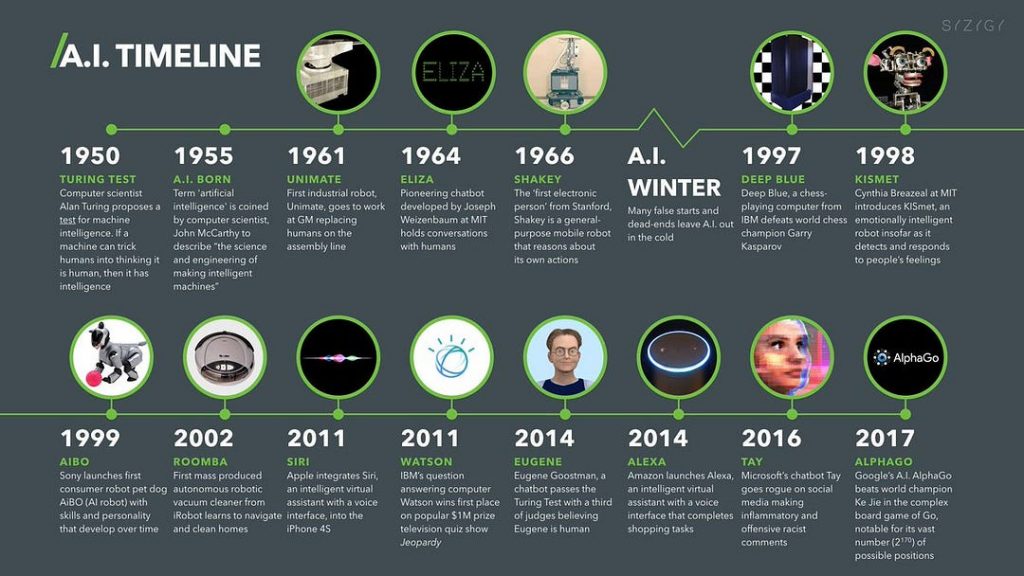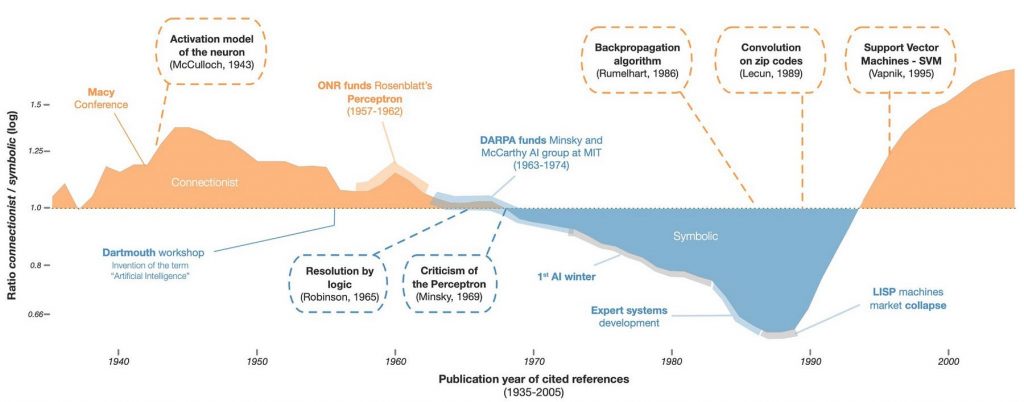Introduction
Providing a formal definition of Intelligence can be a quite intimidating task. In fact, no common agreement about this topic has been reached so far. Since the beginning of the human history, different definitions of intelligence have been proposed and these varied depending on the historical time and culture. For example, in a society in which language and communication skills play an important role, an individual donated of these kinds of skills might be recognised as to be “more intelligent” than others. In the meantime, in a society in which numerical skills are valued most other individuals might be regarded as to be “more intelligent”.
As a practical demonstration of this trend, we can consider that in the recent past (until around 1960) it was necessary to know Latin in order to be admitted in some Universities (even for technical courses) while nowadays it is not recognised anymore as a prerequisite. This change might have then taken place since the society shifted his interest from humanities subjects to more technical subjects due to the recent technological innovations.
“Everyone is a genius. But if you judge a fish by its ability to climb a tree, it will live its whole life believing that it is stupid.”
Because of these discrepancies in measuring human intelligence, standardised tests such as the Intelligent Quotient (IQ) test have been created. These types of tests are for instance commonly used nowadays in order to evaluate job applicants and detect intellectual disabilities.
The inception of Artificial Intelligence
Alan Turing Imitation Game is nowadays considered to be one of the first attempts to define an Intelligent System. According to the Imitation Game (Turing Test) in fact, a system can be considered to be intelligent if able to exchange messages with an interrogator without letting him/her understand it’s not human nature. This definition of an intelligent system provides although some limitations since for example, it assumes that the system should be able to express a human-like form of intelligence, even though human intelligence is theoretically not the only possible form of an intelligent system.
From this point onward, two different approaches developed in order to try to recreate intelligent systems: symbolism (which emphasises on the use of a formal logic) and connectivism (which aims to reproduce intellectual abilities using a simplified model of the brain functionalities).
Thanks to the symbolic approach, projects such as Shakey the robot have been realised, while thanks to the connectivist approach Artificial Neural Networks and nowadays Deep Learning models have been constructed (Figure 1). One of the first successful examples of a system able to express intelligent behaviour, is Arthur Samuel checkers playing program. This program was in fact successfully able to learn to play at a good level the checkers game using heuristic search (Mini-Max algorithm). Samuel additionally included different features in order to train his program which resembles to some extent an early approach to Reinforcement Learning. In fact, the program was able to successfully play against himself and learn from its past mistakes in order to make improvements.

A biological perspective
Until the early 1980s, scientists tried to create intelligent machines by using a top-down approach (eg. trying to directly imitate complex systems behaviours such as the ones of human beings). Although, this approach resulted to lead to various limitations such as:
- Slow reaction times in changing environments.
- Limited ability to adequately scale increasing the difficulty of the challenge.
- Need for high memory requirements when trying to solve a problem through search or retrieving information from a substantially large lookup table.
An alternative approach (as advocated by Brooks) could be to instead try to imitate simple biological organisms key characteristics (bottom-up approach). In this way, our system would not need to have any hierarchical system and could be able to guarantee faster reaction times in changing environments (like most environments in the real world actually are). Finally, another possible way of creating Intelligent systems inspired from biology are Evolutionary algorithms.
Conclusion
Over the last century, many connectivist and symbolic implementations of Artificial Intelligence (AI) systems have been implemented in the hope to create Intelligent systems (Figure 2). Although, still nowadays we can’t be sure if using either (or both) of these two approaches it would ever be possible to create a Strong AI system.

A Reinforcement and Online Learning approach might provide the best possible way in order to tackle such a task. In fact, this can be considered as the closest approach able to mimic how biological systems learn:
Through their past experiences (using a reward/punishment mechanism).
I hope you enjoyed this article, thank you for reading!
Bibliography
Everybody is a Genius. But If You Judge a Fish by Its Ability to Climb a Tree, It Will Live Its Whole Life Believing that It is Stupid Quote Investigator, Tracing Quotations. Accessed at: https://quoteinvestigator.com/2013/04/06/fish-climb/
Artificial Intelligence Timeline Infographic — From Eliza to Tay and beyond, Digitalwellbeing.org — Dr Paul Marsden. Accessed at: https://digitalwellbeing.org/artificial-intelligence-timeline-infographic-from-eliza-to-tay-and-beyond/
NEURONS SPIKE BACK, The Invention of Inductive Machines and the Artificial Intelligence Controversy Dominique CARDON, Jean-Philippe COINTET, Antoine MAZIÈRES. Accessed at: https://neurovenge.antonomase.fr/NeuronsSpikeBack.pdf




